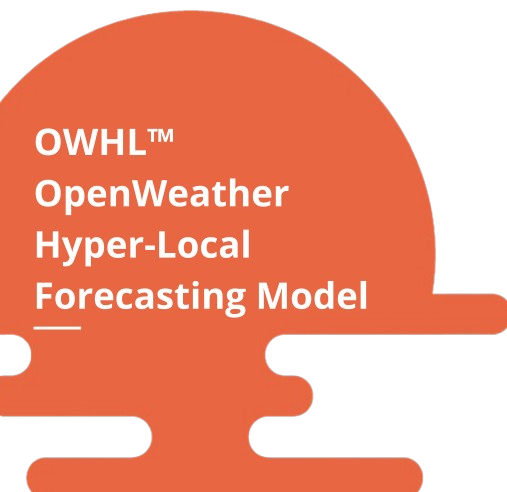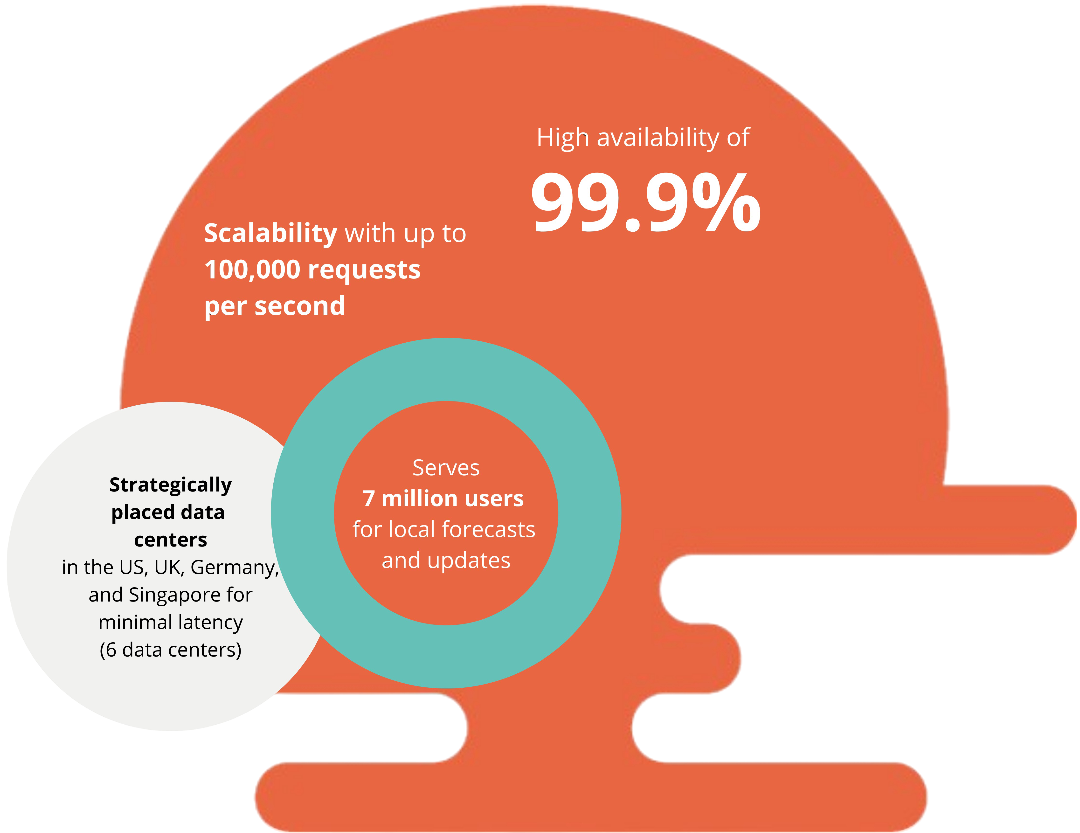OpenWeather’s forecasting system comprises two major modules:
1. OWHL™ NIR Nowcast Short-Range Forecast
The OWHL NIR (Nearly Real-Time) forecasting system uses an extensive range of global data sources,
each contributing to accuracy, resolution, and timeliness.
Weather stations provide highly precise measurements with an accuracy of ±0.1°C for temperature,
±0.5 m/s for wind speed, and ±2% for humidity. They operate at a fine resolution of approximately 10 meters
and offer near-instantaneous updates with latency measured in fractions of a second. This makes them
essential for real-time monitoring and verifying forecast models.
Radar systems, sourced from agencies such as the Met Office, ECMWF, and NOAA, provide detailed
precipitation data with an accuracy of ±1 dBZ and can distinguish between rain and snow with about
85-90% accuracy. Their resolution ranges from 250 meters to 1 kilometer, depending on the radar type
and range. With a latency of only a few minutes, radar is crucial for tracking storm development and
short-term severe weather forecasting.
Meteorological satellites offer broader coverage, capturing large-scale atmospheric patterns.
Their temperature retrievals have an uncertainty of ±0.5°C, and cloud detection accuracy is around 90%.
Depending on the sensor type, resolution varies from 1 kilometer (high-resolution visible imagery) to
5 kilometers (infrared and microwave sensors). However, they introduce a latency of up to 10 minutes due
to data transmission and processing. Satellites are invaluable for monitoring global weather systems,
tracking storms, and analyzing cloud cover.
By integrating data from these sources, Openweather achieves a balance between local precision and
large-scale atmospheric analysis, leading to more accurate and timely weather predictions. This data
undergoes rigorous quality control and integration processes, producing a refined global forecast at
a resolution of approximately 100 m. Short-term forecasts are updated every 1 minute, offering accurate
weather predictions for up to 3 hours ahead.










